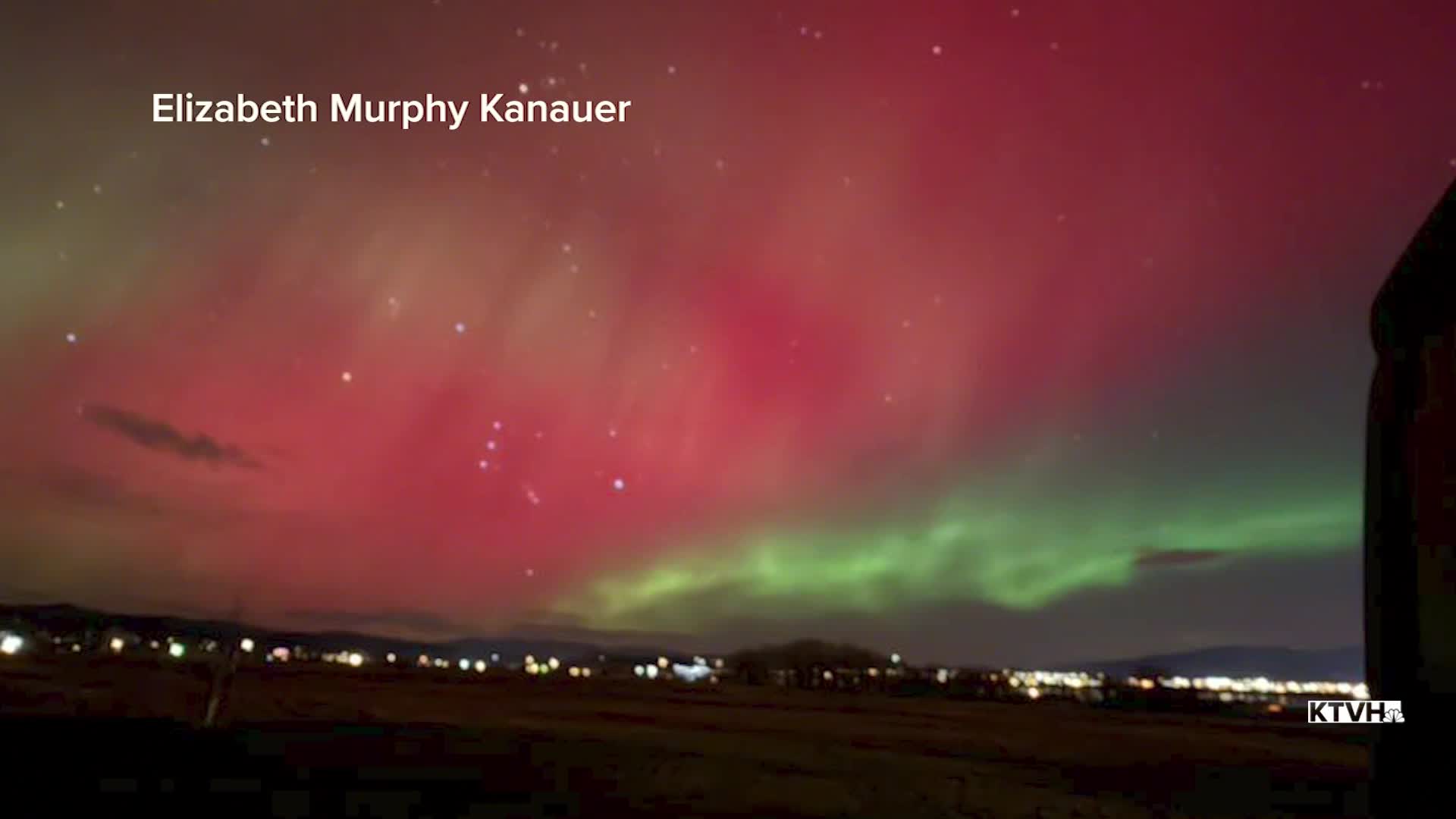HELENA — The northern lights were spotted all across the United States on Tuesday night as a strong solar storm impacted Earth. The Space Weather Prediction Center (SWPC) anticipates aurora activity to continue into Wednesday night.
WATCH: Viewer-submitted pictures from Tuesday night and the forecast for tonight
Sunspots have produced three very strong Coronal Mass Ejections. These "ejections" or "solar storms" travel through space and eventually collide with Earth after about a couple of days. Our first and second storms have already hit, and there is high confidence in the third impacting the planet around 2:00 p.m. mountain time on Wednesday.
The SWPC ranks these storms into five different categories, G1 through G5. G1 is the weakest, and auroras would likely only be seen near the international border. G5 is the strongest, and auroras would be seen as far south as Florida. Yesterday's event was a strong G4 storm, comparable to the solar storms of May and October of 2024.

In addition to the aurora borealis, solar storms of this magnitude can also cause issues to electrical power systems, GPS systems, high-frequency radio transmissions, and satellite communications. But with proper forecast lead time, impacts can be mitigated by providers.
The agency has extended a G4 Major Geomagnetic Storm Watch through the night of November 12th. So similar displays could happen again tonight.

Unfortunately for us in Montana, there will be plenty of cloud cover around to block some of the best views. Clouds will be taking up 50-90% of the total sky area across the state after sunset. The best weather conditions for viewing will be late Wednesday night or very early in the morning on Thursday. Let's just hope that it coincides with the arrival of the solar storm.
For the most up-to-date information on Aurora forecasts and space weather information, visit the Space Weather Prediction Center.




